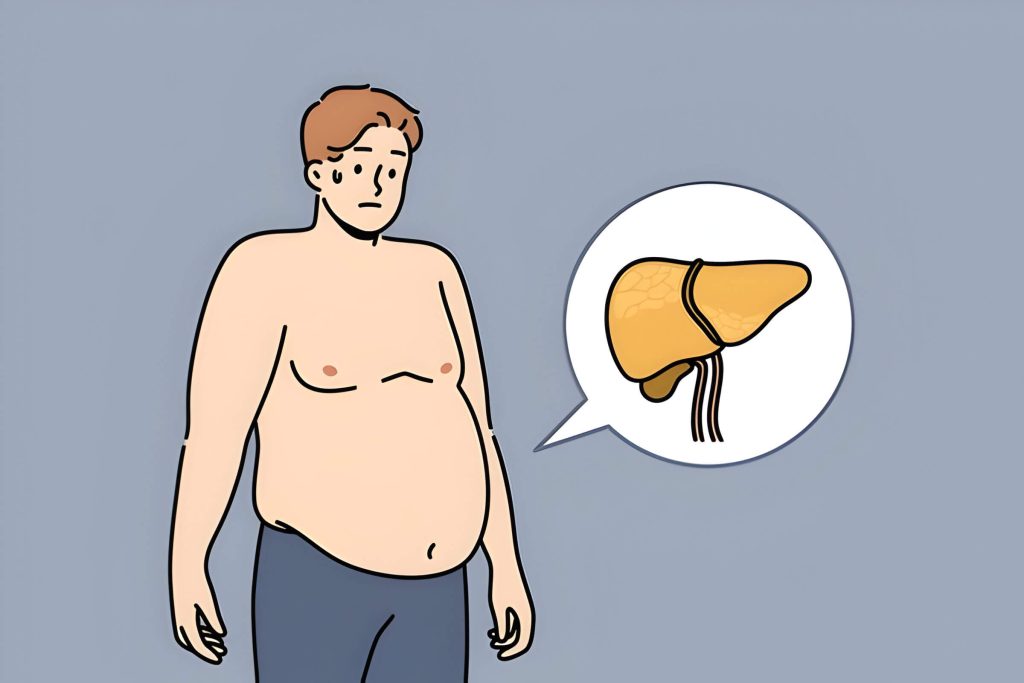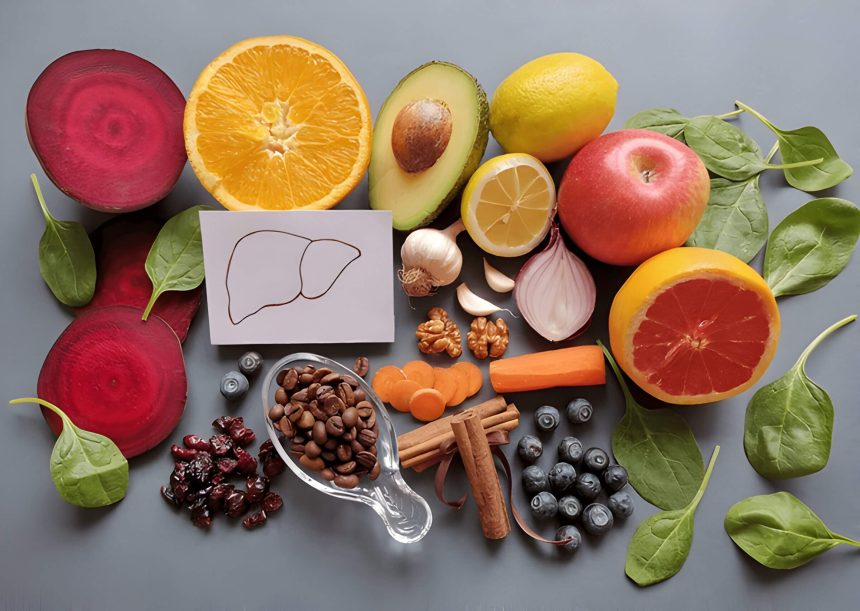Bariatric surgery’s success starts before the operation with the Liver Shrinking Diet. This pre-surgical preparation reduces liver size and abdominal fat, making the procedure safer and more effective. It also helps patients adapt to upcoming lifestyle changes. We’ll examine this diet’s purpose, benefits, and key components to inform prospective patients about their surgical journey.
Understanding the Liver Shrinking Diet
The liver shrinking diet, also known as the pre-bariatric surgery diet, is a crucial step in preparing patients for weight loss surgery. This specialized eating plan serves multiple purposes, with the primary goal of reducing hepatic volume and fatty liver deposits. By following this diet, patients can significantly decrease the size of their liver, which is essential for a safer and more effective bariatric procedure.
The main benefits of the liver shrinking diet include:
- Reduced surgical risks: A smaller liver provides better access for surgeons during the operation, minimizing potential complications.
- Improved liver function: Decreasing fatty deposits in the liver enhances its overall health and functionality.
- Weight loss initiation: Patients often experience some weight loss before surgery, jumpstarting their journey towards a healthier lifestyle.
- Metabolic adaptation: The diet helps the body adjust to a lower calorie intake, preparing it for post-surgery dietary changes.
Typically, the liver shrinking diet consists of high-protein, low-carbohydrate meals and meal replacements. It usually lasts for two to four weeks before the scheduled bariatric surgery. While it can be challenging, adhering to this diet is crucial for optimizing surgical outcomes and setting the stage for long-term weight loss success.
Key Components of the Liver Shrinking Diet

The liver shrinking diet is a specialized pre-operative regimen designed to reduce liver size and facilitate safer bariatric surgery. This diet typically consists of several key components:
- Low-calorie intake: The diet significantly restricts daily calorie consumption, usually ranging from 800 to 1,200 calories per day. This calorie reduction helps deplete liver glycogen stores, leading to liver shrinkage.
- High-protein meals: Protein is emphasized to preserve muscle mass during rapid weight loss. Lean meats, fish, eggs, and low-fat dairy products are common protein sources in this diet.
- Low-carbohydrate foods: Carbohydrates are limited to reduce glycogen storage in the liver. The diet focuses on non-starchy vegetables and small portions of complex carbohydrates.
- Liquid diet phase: Many liver shrinking diets include a liquid-only phase, typically lasting 1-2 weeks before surgery. This phase often involves protein shakes, clear broths, and sugar-free gelatin.
By adhering to these key components, patients can effectively reduce liver size, minimize surgical risks, and prepare their bodies for the upcoming bariatric procedure. It’s crucial to follow this diet under medical supervision to ensure proper nutrition and safety throughout the pre-operative period.
Timeline and Phases of the Liver Shrinking Diet
The liver shrinking diet typically follows a structured timeline with distinct phases to prepare patients for bariatric surgery. The process usually begins 2-3 weeks before the scheduled operation, with the duration varying based on individual needs and surgeon preferences.
Week 1-2: Liquid Diet Phase
During the first two weeks, patients adhere to a strict liquid diet. This phase primarily consists of:
- – Clear broths
- Sugar-free gelatin
- Low-calorie protein shakes
- Sugar-free, non-carbonated beverages
Week 3: Solid Food Introduction
In the third week, some surgeons allow the gradual introduction of solid foods:
- Lean proteins (e.g., chicken, fish)
- Non-starchy vegetables
- Limited complex carbohydrates
Throughout the entire pre-op period, patients are advised to:
- Stay hydrated with water and sugar-free drinks
- Take prescribed vitamins and supplements
- Avoid caffeine and alcohol
It’s crucial to note that the exact timeline and dietary restrictions may vary. Always follow your healthcare provider’s specific instructions, as they will tailor the liver shrinking diet to your individual needs and medical history.
Recommended Foods and Meal Plan for a liver shrinking diet
A liver shrinking diet typically focuses on reducing calorie intake while ensuring adequate nutrition. Here’s a recommended meal plan and list of foods to include:
Breakfast: Start your day with a high-protein, low-carb meal. Opt for sugar-free protein shakes or egg whites with low-starch vegetables like spinach or mushrooms.
Lunch: Choose lean proteins such as grilled chicken, turkey, or fish. Pair with a generous portion of low-starch vegetables like broccoli, cauliflower, or zucchini.
Dinner: Similar to lunch, focus on lean proteins and non-starchy vegetables. Consider options like baked cod with asparagus or a turkey breast with green beans.
Snacks: If needed, opt for sugar-free beverages, small portions of nuts, or low-fat cheese.
Throughout the day, stay hydrated with water, unsweetened tea, or other sugar-free beverages. This meal plan helps reduce liver size by limiting carbohydrates and calories while providing essential nutrients and protein to maintain muscle mass during the pre-surgery period.
Foods and Drinks to Avoid During the Liver Shrinking Diet
During the liver shrinking diet, it’s crucial to avoid certain foods and beverages that can hinder your progress. High-carb foods should be eliminated from your diet, as they can cause your liver to store more glycogen, counteracting the shrinking process. This includes items such as bread, pasta, rice, and potatoes.
Sugary drinks are another category to steer clear of, as they can spike blood sugar levels and contribute to liver fat accumulation. Avoid sodas, fruit juices, and sweetened teas or coffees. Instead, opt for water, unsweetened tea, or black coffee.
Alcohol consumption should be completely avoided during this diet. Alcoholic beverages not only add empty calories but also put additional strain on your liver, impeding its ability to shrink.
Fatty foods, especially those high in saturated and trans fats, should also be excluded from your diet. This includes fried foods, processed meats, full-fat dairy products, and fatty cuts of meat. These foods can increase liver fat and slow down the shrinking process.
By avoiding these foods and drinks, you can maximize the effectiveness of your liver shrinking diet and prepare your body for better health outcomes.
Tips for Success on the Liver Shrinking Diet
Embarking on a liver shrinking diet requires dedication and careful planning. To maximize your success, consider these essential tips:
- Meal prepping: Plan and prepare your meals in advance to ensure you always have compliant options on hand. This helps prevent impulsive food choices and makes it easier to stick to your diet.
- Staying hydrated: Drink plenty of water throughout the day to support your liver function and help manage hunger. Aim for at least 8-10 glasses of water daily, and consider incorporating herbal teas for variety.
- Managing hunger: Combat cravings by eating small, frequent meals rich in protein and fiber. Keep healthy snacks like vegetable sticks or sugar-free gelatin readily available to curb sudden hunger pangs.
- Tracking progress: Monitor your weight, measurements, and how you feel throughout the diet. Keeping a journal can help you stay motivated and identify any areas that need adjustment.
- Incorporating exercise: Engage in light physical activity, such as walking or swimming, to boost your metabolism and support overall health during the diet.
- Getting enough sleep: Prioritize quality sleep to help regulate hormones that affect hunger and metabolism, making it easier to adhere to your diet plan.
Potential Side Effects and How to Manage Them
When embarking on a liver-slimming diet, it’s essential to be aware of potential side effects that may arise during the process. While these effects are typically temporary, understanding and managing them can help you stay committed to your health goals.
Fatigue is a common side effect as your body adjusts to changes in calorie intake and nutrient composition. To combat this, ensure you’re getting adequate sleep and consider incorporating light exercise to boost energy levels.
Constipation may occur due to changes in fiber intake or hydration levels. Increase your water consumption and include fiber-rich foods in your diet to promote regular bowel movements.
Headaches can be a result of sudden dietary changes or dehydration. Stay well-hydrated and consider gradually implementing dietary modifications to minimize this effect.
Mood changes, including irritability or anxiety, may be experienced as your body adapts to new eating patterns. Practice stress-reduction techniques like meditation or deep breathing exercises to help manage these emotional fluctuations.
Remember, if any side effects persist or worsen, it’s crucial to consult with a healthcare professional to ensure your liver-slimming diet is safe and appropriate for your individual needs.
The Role of Exercise During the Liver Shrinking Diet
During the liver shrinking diet, incorporating light exercise can be beneficial for overall health and weight loss goals. Walking is an excellent low-impact option that can help maintain cardiovascular fitness without placing undue stress on the body. Aim for 30 minutes of brisk walking most days of the week, gradually increasing duration and intensity as tolerated.
Strength training, using bodyweight exercises or light weights, can help preserve muscle mass during the calorie-restricted phase. Focus on compound movements like squats, lunges, and push-ups, performing 2-3 sets of 10-15 repetitions, 2-3 times per week.
Flexibility exercises and gentle stretching can improve circulation, reduce muscle tension, and enhance overall well-being. Consider incorporating yoga or simple stretching routines for 10-15 minutes daily.
Remember to listen to your body and consult with your healthcare provider before starting any new exercise regimen, especially during the liver shrinking diet. Staying active, even with light exercise, can support your weight loss efforts and prepare you for a smoother recovery post-surgery.
Post-Diet Expectations and Transitioning to Post-Surgery Diet
After completing the liver shrinking diet, patients should be prepared for the next steps in their weight loss journey. The success of bariatric surgery largely depends on following post-operative dietary guidelines and making long-term lifestyle changes.
Immediately after surgery, patients will transition through several post-op diet phases. These typically include clear liquids, full liquids, pureed foods, and soft foods before gradually returning to solid foods. Each phase is designed to allow the body to heal and adjust to the new digestive system.
It’s crucial to understand that the liver shrinking diet is just the beginning. Long-term success requires a commitment to a balanced, nutrient-dense diet and regular physical activity. Patients should work closely with their healthcare team to develop sustainable eating habits and exercise routines that support their weight loss goals and overall health.
Surgery outcomes can vary, but those who adhere to post-operative guidelines generally experience significant weight loss and improvements in obesity-related health conditions. However, it’s important to have realistic expectations and understand that maintaining weight loss requires ongoing effort and lifestyle modifications.
By following their healthcare team’s recommendations and embracing these changes, patients can maximize the benefits of their bariatric surgery and enjoy improved health and quality of life in the long term.
